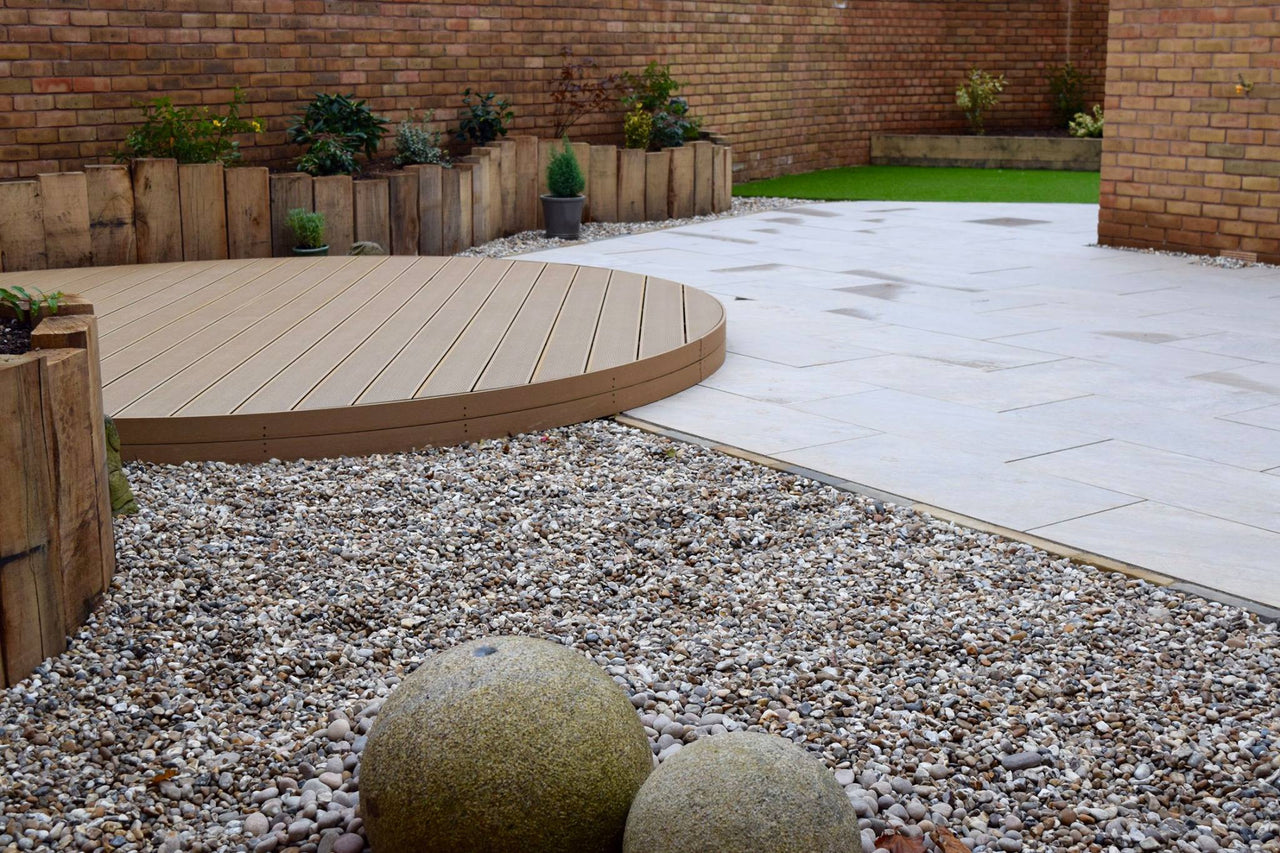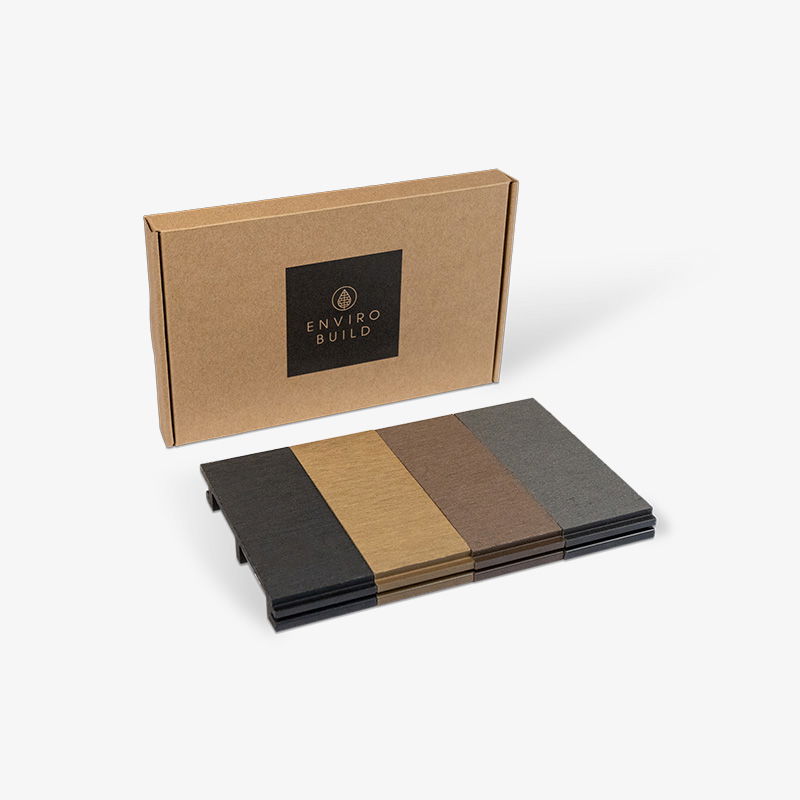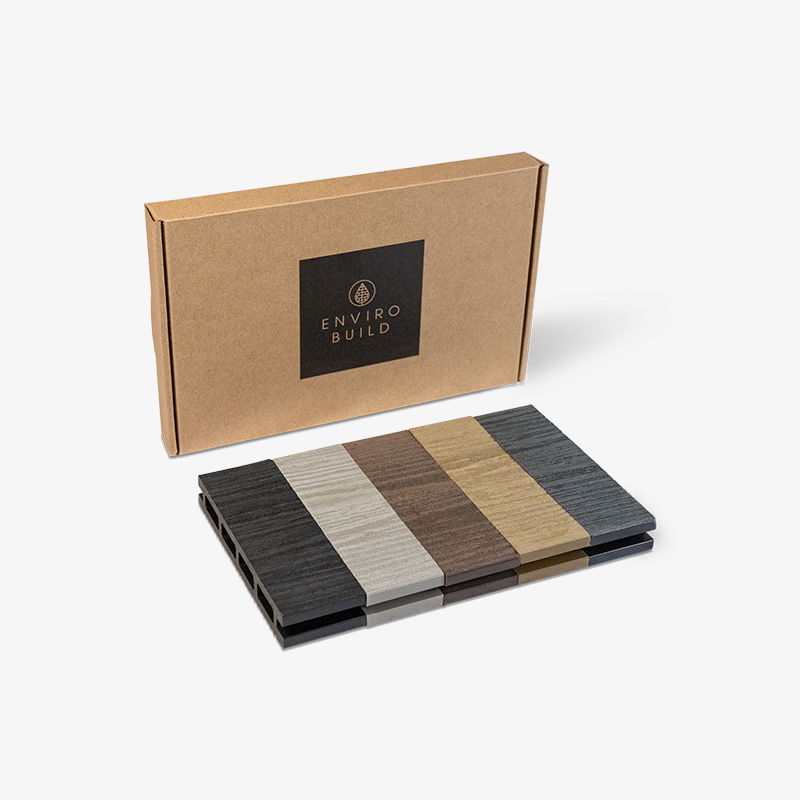Composite Decking Design Ideas: Inspiration for Modern Outdoor Living
Composite decking has revolutionised the way outdoor spaces are designed in the UK. With its sleek appearance, low maintenance and long-lasting performance, it’s become the go-to choice for modern gardens, terraces and balconies. In this guide, we’ll explore composite decking design ideas to help you create a beautiful, functional and sustainable outdoor space that complements your lifestyle and property.

Author Name
Chief Writer
Thu, 28 Jul 2026

Composite decking isn’t just practical, it’s an opportunity to design a truly individual, low-maintenance outdoor space. From creative layouts and built-in features to lighting and colour combinations, there’s no limit to what you can achieve.
Whether you’re planning a small garden renovation or a large commercial terrace, the right decking design can transform the way you live outdoors
1. Create Seamless Indoor–Outdoor Flow
One of the most popular modern trends is designing decks that blend effortlessly with interior spaces. By aligning your deck’s height with interior flooring and using matching tones or complementary finishes, you can create a continuous transition from kitchen or living room to terrace.
Incorporate bi-fold or sliding doors to enhance openness.
Extend indoor furniture styles outdoors for a cohesive aesthetic.
This seamless flow makes smaller homes feel larger and enhances usability, perfect for entertaining and relaxed summer living.
2. Mix Materials for Texture and Contrast
Composite decking pairs beautifully with other outdoor materials like porcelain paving or decorative gravel. Mixing materials introduces contrast and defines separate areas for lounging, dining, or planting.
Design idea:
Use composite decking for raised seating zones.
Surround with porcelain paving to create a dining terrace.
Incorporate planter edging or composite fencing to tie the scheme together.
This layered approach delivers a high-end, landscape-architectural feel with minimal maintenance.
3. Experiment with Decking Patterns and Layouts
Composite decking doesn’t have to follow straight, uniform lines. With a little creativity, you can use alternating directions, herringbone layouts or picture framing to elevate the look.
Diagonal decking adds visual depth and draws the eye across the space.
Picture-framed borders create a professional, finished look.
Herringbone or chevron patterns bring a statement design element for contemporary gardens.
Hidden fastening systems make it easy to achieve these clean, seamless layouts without visible screws, enhancing the premium finish.
4. Use Multi-Level Decking to Define Zones
Multi-level decking is a great way to add structure and dimension to your garden. It’s especially effective for sloped sites or when you want to separate different functional zones, such as a dining terrace, lounge area or hot tub platform.
Using decking joists and pedestals, you can create varying heights safely and efficiently. Each level can feature contrasting board colours or directions for subtle definition.
Tip: Combine composite decking with integrated LED step lighting for safety and style.
5. Integrate Lighting for Year-Round Ambience
The best outdoor decks look just as inviting at night as they do during the day. Adding deck lighting enhances ambience, improves safety and extends usability into the evening.
Use recessed deck lights along edges or steps for subtle illumination.
Add uplights around planters or fencing to highlight textures and foliage.
Choose warm white lighting for a cosy, natural atmosphere.
6. Combine Colours for a Custom Look
Modern composite decking ranges come in a variety of wood tones, greys and charcoals, allowing you to express your style or mimic natural timber.
Use lighter tones like Silver Birch or Marble for a contemporary, airy feel.
Opt for richer shades like Walnut or Granite for warmth and contrast.
Try dual-tone designs, such as a dark border with lighter central boards, to frame the space elegantly.
Combining tones adds depth and visual interest, a subtle way to make your deck truly unique.
7. Add Built-In Seating and Planters
For small or minimalist gardens, built-in features are an efficient way to add comfort and greenery without clutter.
Use composite decking or matching cladding boards to create:
Integrated bench seating.
Raised planters or retaining walls.
Privacy screens.
These built-in details make the space feel intentional and cohesive, while maintaining the same weatherproof, low-maintenance benefits.
8. Incorporate Water or Fire Features
If you’re looking to create a statement garden feature, consider pairing your composite deck with a water feature or fire pit.
Because composite decking is moisture-resistant and splinter-free, it’s safe to install near ponds, hot tubs or pools. For fire pits or outdoor kitchens, always ensure appropriate clearance and heat-resistant barriers are used, in line with manufacturer guidance.
9. Design for Practicality and Privacy
Beyond aesthetics, great deck design should enhance comfort and privacy. Incorporate fencing panels, slatted screens, or pergolas to shield from wind and neighbouring views while adding architectural interest.
Use composite fencing or battens in matching colours for visual consistency.
Add shade structures or retractable canopies for sun protection.
Include storage solutions, such as concealed bench seating or built-in boxes, to keep the space clutter-free.
10. Choose your Decking Shape
The best decking shapes for modern outdoor spaces help homeowners and designers choose the right layout for both function and style. It covers classic options like rectangular and square decks for simplicity, curved and L-shaped layouts for design flow, and multi-level or wraparound decks for visual impact and practicality.
The best decking shape is one that complements your property, enhances flow and maximises outdoor usability. Whether you prefer the clean lines of a rectangular deck or the elegance of curved designs, composite materials make it possible to achieve any layout with precision and long-term performance.








